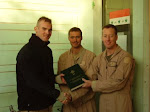What does it mean to reject Vatican II?
The continued battle over Vatican II seems to be more about an idea of the Council and its implementation, rather than focusing on its actual legitimacy.

The Second Vatican Council (1962-65) was a unique ecumenical council. The previous twenty were assembled to address particular doctrinal or ecclesial crises, while John XXIII called Vatican II to layout a new pastoral program for engaging the modern world. It was not a particular crisis but a general one, focused on finding a new way of conveying the Christian life in the modern world.
In the aftermath of the Council, both progressive and traditional wings viewed it as revolutionary, a sharp break from the previous practice of the Church. It did not help that the 1960s were a period of great cultural turmoil, adding fuel to the fire of confusion and disaffiliation that occurred in the Church.
Pope Benedict XVI, who as a peritus or theological expert at the Council had helped draft some of the documents as part of the progressive party, looked back with concern and identified two major ways of interpreting the Council: a hermeneutic of “discontinuity and rupture” and one of “reform” in continuity with the tradition. The “Spirit of Vatican II” belonged to the former interpretation and came to stand for a whole new way of thinking, praying, teaching, and living as a Catholic in the modern world, marked by a much greater openness to the world and aversion to traditional Catholic practices.
It seemed that the pontificates of John Paul II and Benedict XVI were steering the Church toward continuity, although Pope Francis has led a reemergence of the progressive camp.
Francis has repeatedly called attention to what he views as a growing rejection of the Second Vatican Council. Speaking to editors of European Jesuit journals on May 19, he related this view: “It is very difficult to see spiritual renewal using old-fashioned criteria. We need to renew our way of seeing reality, of evaluating it. . . . Restorationism has come to gag the Council. The number of groups of ‘restorers’ – for example, in the United States there are many – is significant. . . .They had never accepted the Council.”
Commenting on these remarks, Ed Condon at The Pillar made an important clarification: “Vatican II is more of a feeling, or state of mind, than an historical event that produced tangible documents.” An outright rejection of the Council is rare, although many people have questioned the effectiveness of the pastoral and liturgical approach that sought to implement the Council’s vision.
Read the rest: https://www.catholicworldreport.com/2022/07/07/what-does-it-mean-to-reject-vatican-ii/











No comments:
Post a Comment